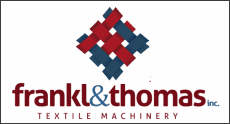
Posted November 21, 2017
By Devin Steele (DSteele@eTextileCommunications.com)
BELMONT, N.C. and CLEMSON, S.C. – Members and guests of the Southern Textile Association (STA) heard a wide variety of presentations during their recent Northern and Southern Division Fall Meetings.
At the Northern Division event at Gaston College’s Textile Technology Center on the Kimbrell Campus in Belmont, N.C., Mary Lynn Landgraf, senior international trade specialist, Office of Textiles and Apparel (OTEXA) in the U.S. Department of Commerce, discussed, “The Dynamic Forces of Reshoring and Foreign Direct Investment – Who Wins and Why.”
“Our industry has in image problem in many ways, we all know that,” Landgraf said early in her remarks. “But letting people know that we are a dynamic, growing industry is critical.”
She highlighted this point by telling an anecdote about meeting an Italian during her breakfast at the hotel that morning.
“When I told him what I do, he said he thought textiles was dead in the U.S.,” Landgraf said. “I travel the world on your behalf promoting U.S. textiles, and people can’t believe we have such a great, booming and innovative textile industry. When I try to attract people to our booth at global trade shows, I say, ‘if you can fly it, float it, tote it, wear it, tear it, shoot it and boot it, we make it – and you can take it.”
After the chuckles subsided, she continued: “We have in image issue that we need to take advantage of. The tides have flowed back to you all. The whole made-in-America issue is enormous, and it’s enormous overseas. And it’s not just because of the Berry Amendment. Made in America was a determining factor for Walmart’s made-in-America initiative, for example.”
Reshoring is real, based on OTEXA data, she added. The office tracks: 1) Who is coming back to the U.S, and why?; and 2) Foreign Direct Investment (FDI). And the tides have begun to turn, she added: FDI has grown since 2014, and manufacturing innovation institutes have been created in the U.S.
She then delved into the work OTEXA is doing to assist U.S. companies in their export, reshoring, promotion and other efforts, provided a brief history of the U.S. textile industry’s downturn and offered her take on the reshoring phenomenon.
Landgraf showed data on buying attitudes toward American-made products, pointing out that more than 80 percent of Americans and a “surprising” 61 percent of Chinese said they would pay a premium for American-made goods in comparison to products made in China, according to a survey by Boston Consulting Group. She also shared a number of other surveys supporting this.
She also cited several factors that are driving industry back to the U.S., including: higher product quality and consistency; rising offshore wages; a skilled workforce and no issues with child labor; freight costs; shorter lead times; lower energy costs; minimal intellectual property and regulatory compliance risks; improved innovation and product differentiation; and more.
Landgraf then provided information on government (OTEXA, SelectUSA, etc.) and private entities (Reshoring Intiaitive, etc.) that are working with companies to assist their reshoring efforts, and cited examples of several companies that have been successful bringing jobs back.
Attendees also heard from Randy C. Baker, founder and CEO, MedCall Healthcare Advisors, who presented, “Why Your Worker’s Comp Strategy Is Wrong.”
“We looked at 13,000 worker’s comp cases,” he said, “and discovered a troubling trend: An egregious overutilization of the ER. We looked at it and wondered, when you have an injured worker, before he seeks treatment, what if he can pick up the phone and talk to an ER doctor? We figured out we could save 17 percent to 35 percent in costs.”
He explained the concept and how it works and would benefit companies.
Medcall also looked at the true drivers of cost, both in worker’s comp and health care. In worker’s comp, they found that the documentation of that event is more important than the care of the employee.
“We couldn’t figure out how you have a loyal employee who has been working for 15 years in your company and all of a sudden, when he gets injured, he becomes an adversary of your company,” Baker said. “We found out that’s the last thing on the employee’s mind. That first 48 hours is the incubation period for worker’s comp litigation. The only thing the employee wants to do is get medical attention and get back to work. But the industry is more concerned with that 5 percent to 7 percent who want to file a lawsuit.”
Later, he said. ‘What if we put the best interest of the employee ahead of the paperwork? What would happen? This is how to be disruptive in the worker’s comp area.”
In the technical area, Charlie Hartman, senior sales representative at H-T-L perma USA, Charlotte, N.C., discussed how single-point lubrication helps solve maintenance issues.
And on the political front, Dr. Susan Roberts, associate professor of political science at Davidson College, explained how political parties operate in today’s bipartisan climate.
Southern Division Meeting
At the Madren Conference Center in Clemson, S.C., (which eTC was unable to cover due to a conflict), presentations and speakers included:
“South Carolina’s Air Quality: Regulation and Compliance Update”
Rhonda B. Thompson, P.E., bureau chief, BAQ
South Carolina DHEC's Bureau of Air Quality
“Smart Tools for the Smart Factory”
Robbie Moore, area sales manager – U.S. Southeast
POKA
“Common Indicators of Drug Use in the Workplace”
Lt. Melissa B. Hendricks, chief forensic chemist
Spartanburg County Sheriff's Office
“Cooperative Education Program: Engaged Learning for Students and a Pipeline to Talent for Companies”
Dr. Jeffrey F. Neal, Cooperative Education Program
Clemson University
With photography contributes from Steve Adams and Roy Lockett
STA Fall Meetings
‘Tides flowing back’ to U.S. textiles, according to OTEXA trade specialist
 |
|---|
 |
 |
 |
 |
 |
 |
 |
 |
 |
 |
 |
 |












